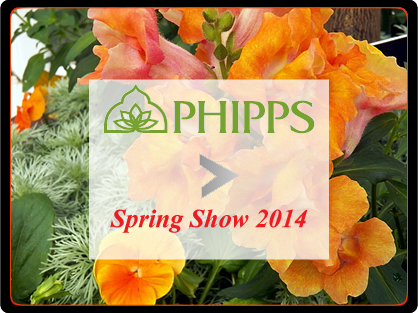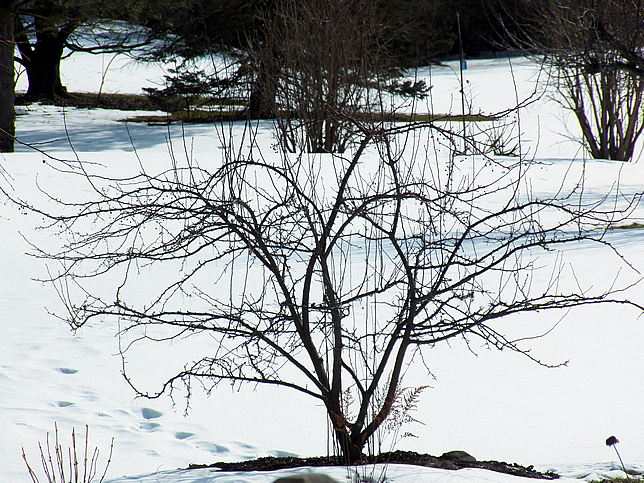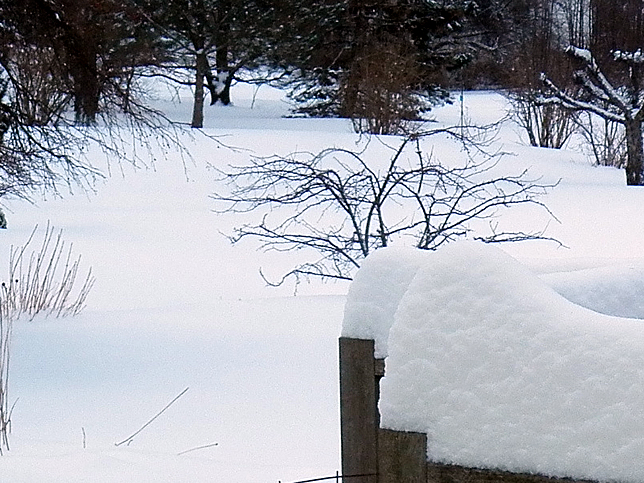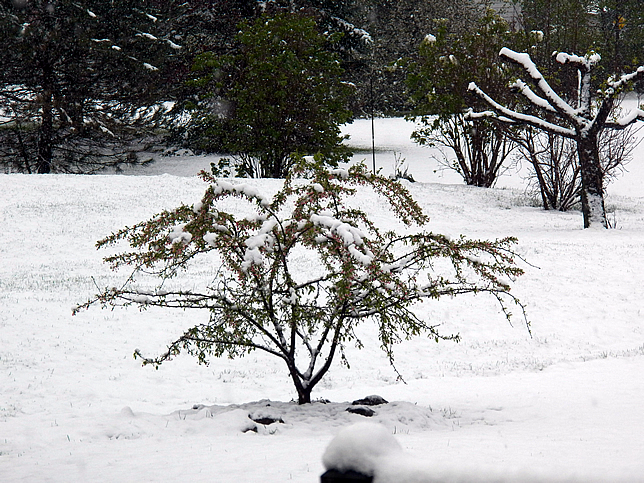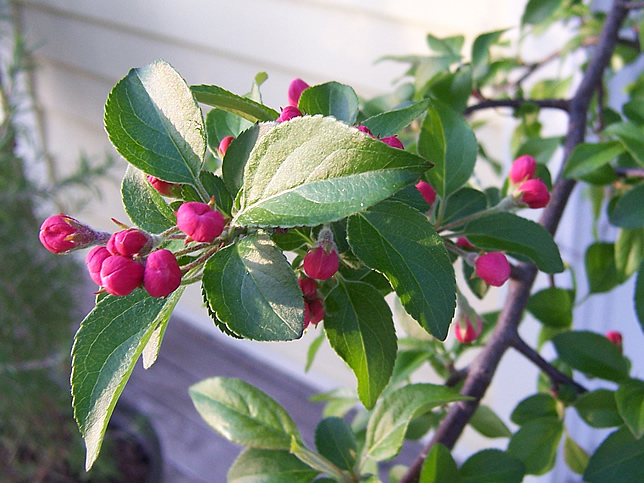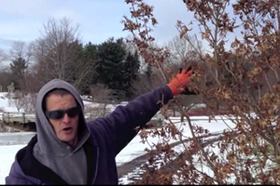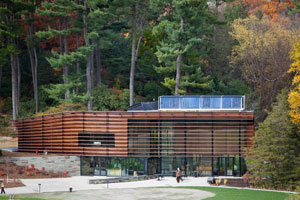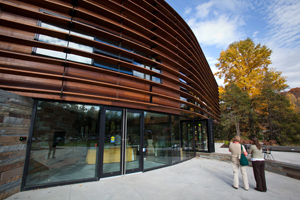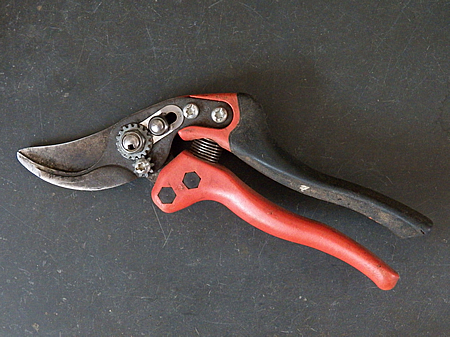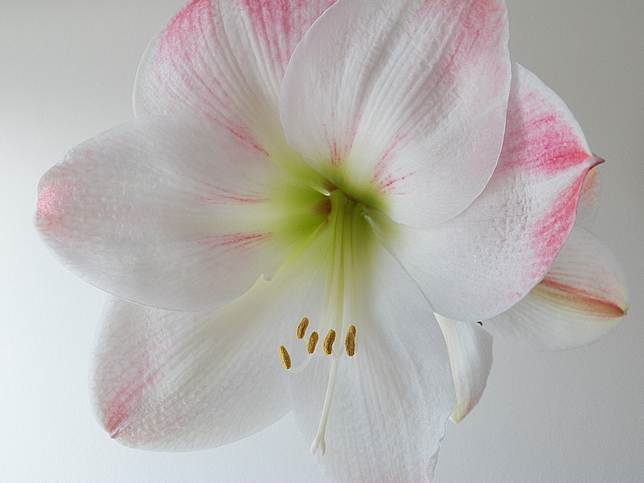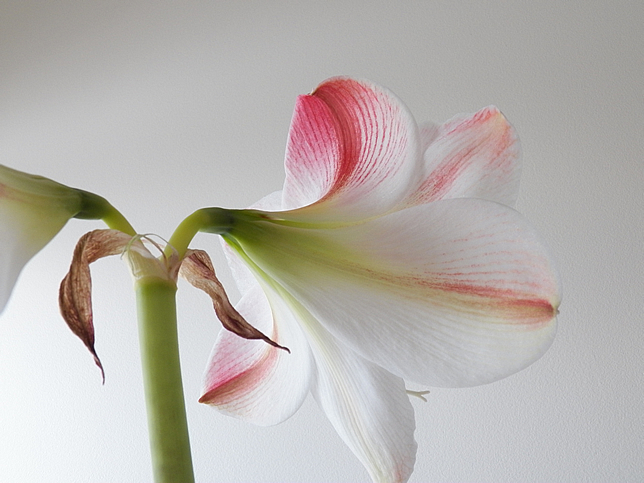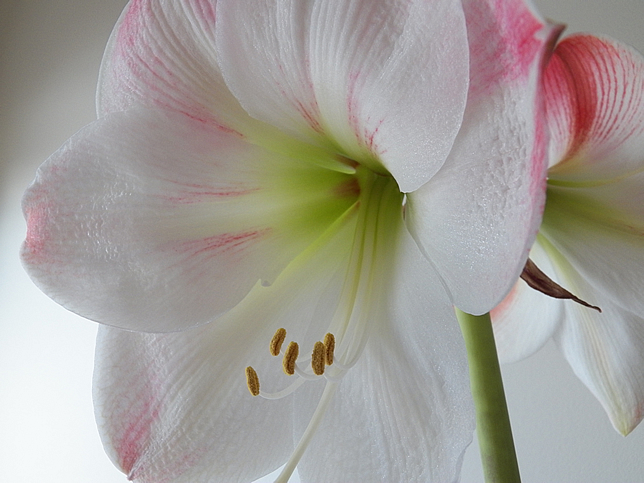I do love going to the Phipps Conservatory when we go to Pittsburgh! Here is the Spring Show from March 2014 featuring primroses, pansies, and so many beautiful orchids. Enjoy!
April 2, 2014
March 16, 2014
Pruning at home
After we went to the pruning class, I started really eyeing our own trees to check what needed to be done. One little tree that I view almost daily was really bugging me and I wanted to take care of it. See what I mean?
It is a cute little tree, low branched, but it has a lot of wonky growth going on. So first, some more information on pruning.
There are some other issues to consider before taking the pruning task on. Sure, we are all enthusiastic about getting out there and neatening things up in the winter, but sometimes it is best to just put the pruners away and do something else. Primarily, what I am talking about here is that you need to be aware of what is coming in terms of weather, i.e., the phenomenon of cold acclimation/de-acclimation. Woody plants go through phases of acclimating to the cold temperatures and their cold tolerance is maximal at a certain period of time depending on the species. Pruning in the late fall before the plant truly goes dormant pushes the tree or shrub to start producing more growth that is intolerant to cold and will be highly susceptible to injury and even death of the plant. Once the plant reaches its maximal cold tolerance and then we experience periods of warmer weather rather than sustained cold weather, the plant will begin to de-acclimate, or wake up. Another bout of cold weather will reactivate the acclimation process and subsequent cold protection, but the plant’s ability to repeat this becomes increasingly compromised as the season wears on. What this means is that any injury, pruning or otherwise, just before another cold snap, can cause serious damage or death. Some folks advocate backing away from the pruners anywhere from 3 days to 2 weeks before a plunge in temperatures is predicted. There’s your excuse for being a couch potato! In any case, check the weather forecast, and aim for pruning when there is less time between injury and the time when the plant can recover favorably from the injury (more on this in another post).
This little crabapple got pruned this year about 4 days before we got dumped on with 18 inches of snow and 0 degree night temps. Hopefully, this amount of time will be acceptable to it!
But look at the poor thing two years ago after a late April snowstorm, fully budded and almost all leaved out. So sometimes, you just can’t predict what the weather is going to do!
Another factor to consider, although many plants are or can be pruned now in late winter, is that there are some that it might be better to wait until after they bloom to prune. Those are the early spring bloomers such as forsythia, lilac, and early blooming spireas among others, and pruning may remove much of their glorious floral presence. On the other hand, burning bushes, ninebark, barberry, colored twig dogwood, or other plants that are primarily grown for their foliage are prime candidates for pruning before their growth starts in the spring. Note that “bleeders” or trees like maples, birches, and related species, may look unsightly and cause concern, but it usually does no harm to prune them in late winter. So, consider what you are pruning.
Although my crabapple is a spring bloomer, I want to be able to see the flowers and not a lot of vegetative growth.
March 10, 2014
Pruning at the Plantations
On Saturday, we went to a class on pruning given at the Cornell Plantations in Ithaca NY. Although we have been gardening (and pruning) for a very long time, it was good to get out, take a drive, and catch up on any new information and techniques. The class was led by Lee Dean, a Certified Master Arborist for the Plantations.
He discussed tools, techniques, and safety in an indoor session at the new Nevin Welcome Center with several handouts, interesting specimens, and chalkboard drawings and then followed up by giving the class some field experience in a garden just outside with a variety of woody plants – some small dogwood trees, young viburnums and other small shrubs.
A quick mention about the Nevin Welcome Center: This building is LEED Gold certified based on qualifications by the US Green Building Council and is quite impressive.
The first floor includes a bright and airy two-story atrium and lobby with a gift shop and small café. Interpretive exhibits about Cornell Plantations are also displayed; one this time included pretty watercolor tree and landscape paintings done by students of Camille Doucet in adult classes at Cornell Plantations. Upstairs includes room for classes, conferences, or other events. I was particularly entranced by the floor-to-ceiling chalkboard wall and the rolling chairs and tables! You can learn more about this fabulous building in its handout here.
Back to pruning. Pruning your trees and shrubs can beautify your landscape and improve the growth and health of your plants. It is not hard work and most of your gardens can be handled simply with hand pruners and a small folding saw. Although many landscapers swear by Felco pruners, my personal favorite pruners are by Bahco.
I first heard about these on another blog here where the merits of Felco, Corona, and Bahco pruners were compared. Since both the Bahco and Felco pruners are available at AM Leonard where I purchase a bunch of stuff for my gardening business (also available through Amazon), I decided to give them a try. I have been more than pleased with their ergonomic cutting head – my hands and wrist thank them every day! I also have a small folding pruning saw by Bahco which is great too.
So, here is the lowdown on pruning:
- Don’t ignore it – examine your plants annually. Plants will respond with regular pruning to keep the plant in bounds, keep its growth vigorous, and keep it looking beautiful.
- Pruning is not difficult. Educate yourself on how your plant grows and what it should look like afterward.
- Plants won’t die if pruned at the wrong time of year. Injury may occur, but they won’t die. Usually pruning is performed during the winter because this is when the plants are dormant, but many are best pruned right after blooming. Learn about your plants.
- Winter pruning – if you and your pruners can stand the weather, it is a fine time to prune.
- Do NOT top your trees. This only leads to weak aftergrowth and may also encourage more wood rot.
- Removing a tree or shrub is NOT a crime against nature. If they are not in the right place and have gotten too large or are suffering in that spot, move or remove. Don’t let them be mutilated beyond recognition by the utility companies, for example – hmm, a post for another day.
- Hedge trimmers are NOT proper pruning tools for shrubs except for pruning shaped hedges. Learn to use the hand pruners and pruning saw properly.
The details and mechanics of pruning are best left to another post. All in all, we had a good day pruning at the Plantations.
March 9, 2014
Amaryllis 2014
The amaryllis my sister in Texas gave me all those many years ago is blooming again! This bulb must be at least 7 years old now and I first mentioned it here in 2009 when it was at least 2 years old then.
The cultivar is Apple Blossom and it has a very light, sweet scent. So nice when it is cold and there is still snow on the ground outside.
I also mentioned it on one of my Plantitude posts here and its care is very easy. I put it outdoors with my other houseplants when the weather permits, and there it sits, enjoying all the benefits of a life out of doors until I bring it in in the late fall. Then I cut off any leaves, put it on a windowsill, and stop watering it until a tiny green shoot pokes up from the bulb.
Isn’t it amazing?!
